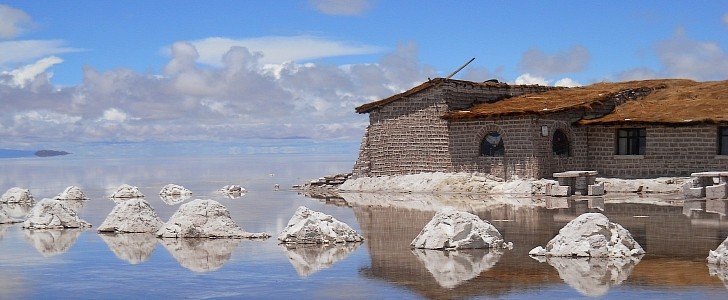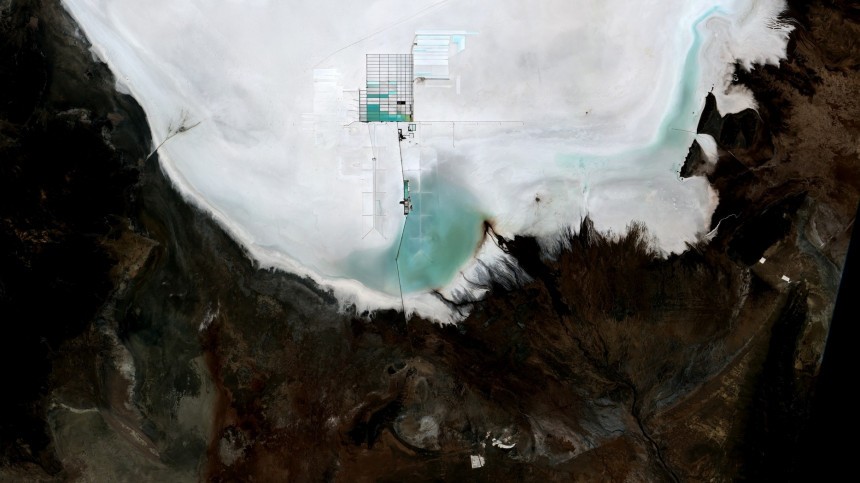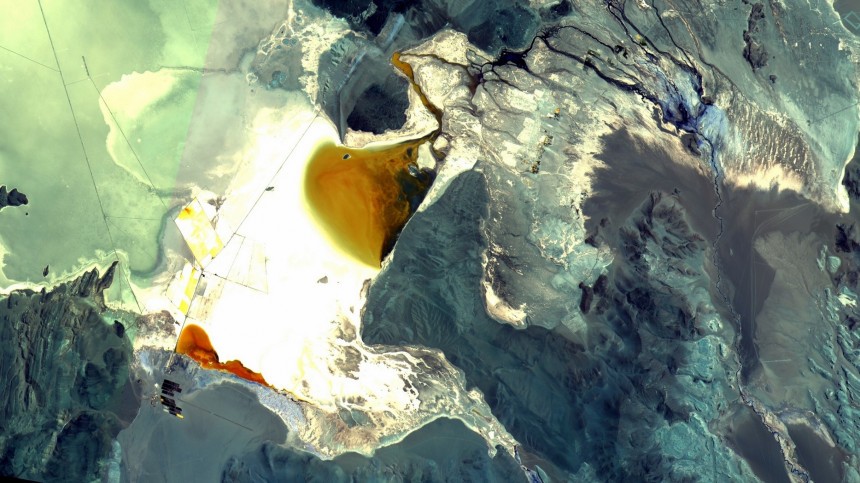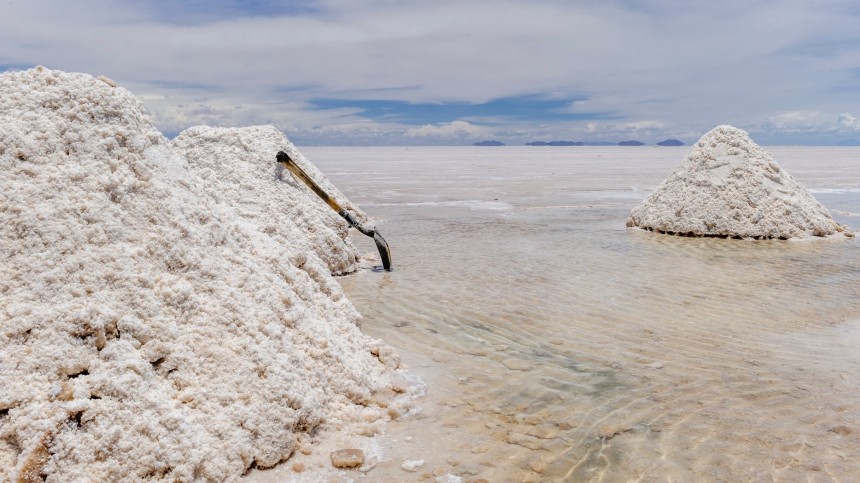One of the most significant concerns around Tesla Giga Grünheide is about the water reserves underneath it. The German factory faces resistance from environmental groups and local residents who fear it may contaminate their drinking water. Curiously, Argentina faces the same concern. The difference is that it is related to lithium, the raw material needed to produce batteries and electric cars. This is what “In the Name of Lithium” proposes to warn the world about.
It is a pity that Christian (Tian) Cartier and Martín Longo, the movie directors, did not create a version with English subtitles. Their website (https://enelnombredellitio.org.ar/) is also not working, so the only place you can watch the movie is in the Vimeo link embedded here – if you speak Spanish. In case you don’t, we can summarize the whole thing.
Cartier and Longo took 1 hour and 15 minutes to artistically present a message that could fit in 20 minutes. That warning relates to the danger presented to local communities with lithium mining due to its need for clean water.
According to the documentary, it takes 2 million liters of drinkable water to extract 1 ton of lithium carbonate. The salty waters extracted from underneath the salt flats are put in tanks to dry. What remains has to be cleaned with drinkable water to obtain the lithium carbonate.
That water is what the 40 indigenous communities that live in salt flats have to drink, bathe, cook, and plant food. In other words, it is what they need to live. It is no surprise they are against lithium extraction, but the movie only presents their point of view.
It shows the indigenous communities that live in the “salars” (salt flats) performing rain dances, rituals, and protesting. Their demand is “no to lithium,” and they present no alternative other than that mining companies leave the salt flats. The directors have not spoken to the mining companies to hear what they propose to do.
Interestingly, the movie presents global activists like Greta Thunberg and others talking about climate change not as the heroes the mainstream media created but as the people pushing for lithium mining. Some of the people interviewed by the movie accuse rich countries of being concerned solely with their own survival. As long as they can have lithium from Argentina and cobalt from Congo, it wouldn’t matter how these minerals would have been obtained.
The most meaningful question the movie poses is how environmentally friendly this push for clean energy really is. At a certain point, one of the indigenous leaders writes in a notebook: clean energy for who?
In a way, the movie helps to discuss how the triumph of electric cars can be different from that of combustion-engined vehicles. If the latter pushed for more fossil fuels, the former is already requesting raw materials that cannot be obtained without aggressive methods for regions such as the Argentinian salt flats.
Demand for lithium has risen the lithium carbonate price from $2,000 around ten years ago to $12,000 nowadays. Prices will keep growing – and restraining EV adoption – if more lithium cannot be extracted faster and at a more massive scale. And that leads to another interesting discussion.
Being rich in lithium reserves, why would Argentina sell it for cheap just to import electric cars? Wouldn’t it make more sense to turn it into batteries and sell it for much higher prices? That’s a very valid conversation, especially for a developing country.
Despite being a very one-sided movie, “In the Name of Lithium” concludes that the transition to clean transportation is not being done in the best way. Even if you disagree with the points it so clearly defends, this is a conclusion that deserves a thoughtful reflection.
Changing the personal transportation matrix without addressing the commercial relations involved is choosing the lesser evil. Earth Overshoot Day has already proven that the model of consuming more resources to increase GDP and other economic indexes will only make the world a poorer place.
While there are no clear benefits for all the involved stakeholders, it will be desirable just for those wanting to have a clean conscience while greenwashing their profits. As a voice at the end of the movie states, we cannot bleed communities or the places where they live in the name of lithium and electric cars. They can be better in more ways than just their energy efficiency.
Cartier and Longo took 1 hour and 15 minutes to artistically present a message that could fit in 20 minutes. That warning relates to the danger presented to local communities with lithium mining due to its need for clean water.
According to the documentary, it takes 2 million liters of drinkable water to extract 1 ton of lithium carbonate. The salty waters extracted from underneath the salt flats are put in tanks to dry. What remains has to be cleaned with drinkable water to obtain the lithium carbonate.
It shows the indigenous communities that live in the “salars” (salt flats) performing rain dances, rituals, and protesting. Their demand is “no to lithium,” and they present no alternative other than that mining companies leave the salt flats. The directors have not spoken to the mining companies to hear what they propose to do.
Interestingly, the movie presents global activists like Greta Thunberg and others talking about climate change not as the heroes the mainstream media created but as the people pushing for lithium mining. Some of the people interviewed by the movie accuse rich countries of being concerned solely with their own survival. As long as they can have lithium from Argentina and cobalt from Congo, it wouldn’t matter how these minerals would have been obtained.
In a way, the movie helps to discuss how the triumph of electric cars can be different from that of combustion-engined vehicles. If the latter pushed for more fossil fuels, the former is already requesting raw materials that cannot be obtained without aggressive methods for regions such as the Argentinian salt flats.
Demand for lithium has risen the lithium carbonate price from $2,000 around ten years ago to $12,000 nowadays. Prices will keep growing – and restraining EV adoption – if more lithium cannot be extracted faster and at a more massive scale. And that leads to another interesting discussion.
Despite being a very one-sided movie, “In the Name of Lithium” concludes that the transition to clean transportation is not being done in the best way. Even if you disagree with the points it so clearly defends, this is a conclusion that deserves a thoughtful reflection.
Changing the personal transportation matrix without addressing the commercial relations involved is choosing the lesser evil. Earth Overshoot Day has already proven that the model of consuming more resources to increase GDP and other economic indexes will only make the world a poorer place.
While there are no clear benefits for all the involved stakeholders, it will be desirable just for those wanting to have a clean conscience while greenwashing their profits. As a voice at the end of the movie states, we cannot bleed communities or the places where they live in the name of lithium and electric cars. They can be better in more ways than just their energy efficiency.










